Everything you Need to Know About Dog Feed Making Machine
Introduction to Dog Feed Making Machine
Dog feed making machines are pivotal in the pet food industry, revolutionizing the way dog food is manufactured. These machines streamline the process of producing high-quality and nutritious feed for our beloved canine companions. From mixing to packaging, they automate various stages of production, ensuring consistency and efficiency.
These machines come in various sizes and capacities, catering to the diverse needs of pet food manufacturers. Whether it's a small-scale operation or a large industrial facility, there's a dog feed making machine designed to suit every requirement. In this section, we'll delve into the evolution of dog feed manufacturing technology, tracing its development over the years.
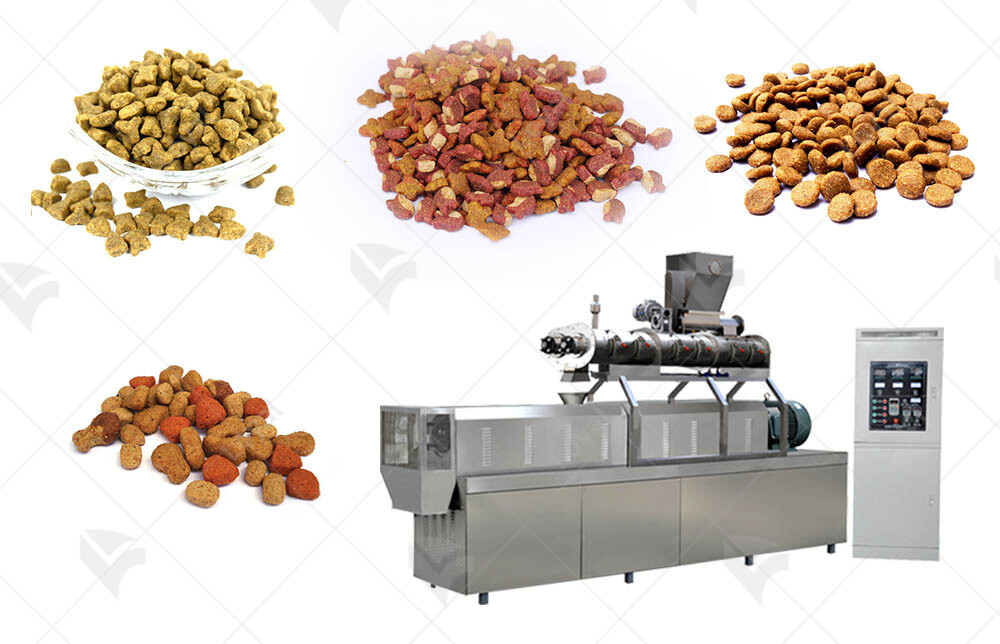
Evolution of Dog Feed Manufacturing Technology
Initially, dog feed production relied heavily on manual labor, with workers mixing ingredients by hand and forming the feed into shapes. This method was time-consuming and lacked consistency, leading to variations in the quality of the final product.
However, with the advent of mechanization in the early 20th century, the landscape of dog feed manufacturing began to change. The introduction of simple mixing machines enabled manufacturers to achieve more uniform blends of ingredients, enhancing the nutritional value of the feed.
As technology progressed, so did the sophistication of dog feed making machines. Modern equipment is equipped with advanced features such as computerized controls, precision dosing systems, and automated packaging, allowing for greater precision and efficiency in production.
Moreover, the incorporation of innovative processing techniques, such as extrusion and thermal processing, has further improved the nutritional quality and digestibility of dog feed. These methods ensure that essential nutrients are preserved while eliminating harmful pathogens, guaranteeing the safety of the final product.
In recent years, there has been a growing emphasis on sustainability and eco-friendliness in dog feed manufacturing. As a result, manufacturers are increasingly adopting green technologies and practices, such as energy-efficient equipment and sustainable sourcing of ingredients.
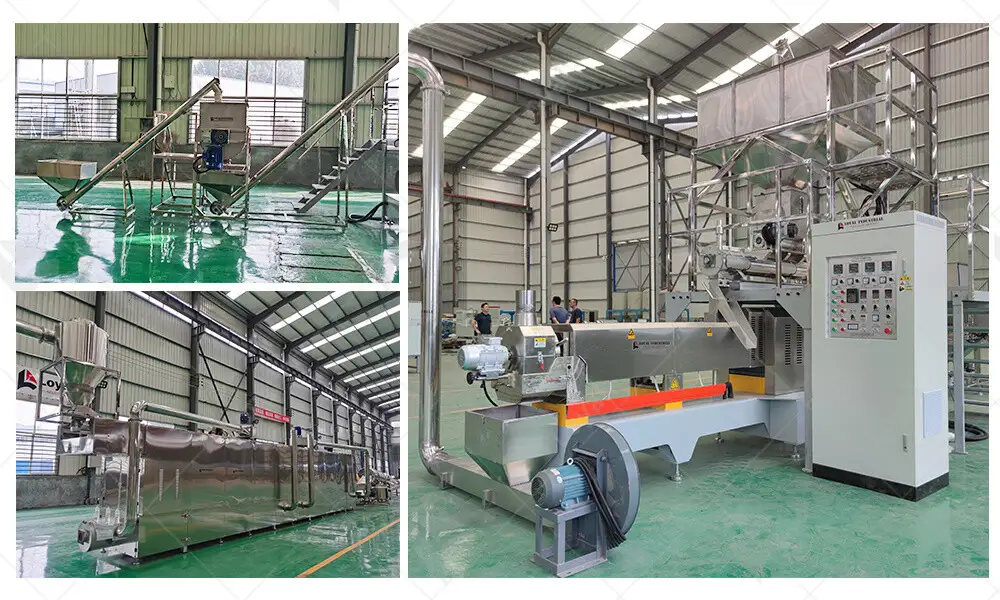
Components of a Dog Feed Making Machine
A dog feed making machine consists of several key components, including a grinder or crusher, mixer or blender, pelletizer or extruder, dryer, cooler, and packaging equipment. Each component plays a critical role in the manufacturing process, contributing to the production of high-quality and nutritious dog feed.
1. Grinder or Crusher: One of the primary components of a dog feed making machine is the grinder or crusher. This component is responsible for grinding or crushing raw materials into smaller particles suitable for further processing. It plays a vital role in breaking down ingredients such as grains, meats, and vegetables to the desired consistency.
2. Mixer or Blender: Another essential component is the mixer or blender, which is responsible for blending the ground ingredients to create a uniform mixture. This component ensures that all ingredients are evenly distributed throughout the feed, enhancing its nutritional consistency and palatability. The mixer or blender can vary in size and design depending on the scale of production and specific requirements.
3. Pelletizer or Extruder: Once the ingredients are mixed thoroughly, they are processed through a pelletizer or extruder. This component is responsible for forming the mixture into pellets or extruded shapes of the desired size and density. Pelletizing or extruding the feed enhances its digestibility, shelf-life, and overall quality, making it more convenient for storage and consumption.
4. Dryer: After the pellets or extruded shapes are formed, they undergo a drying process to remove excess moisture and achieve the desired moisture content. The dryer component of a dog feed making machine utilizes heat and airflow to evaporate moisture from the feed, ensuring optimal preservation and stability. Proper drying is essential for preventing mold growth and maintaining the nutritional integrity of the feed.
5. Cooler: Once the feed is dried, it passes through a cooler to reduce its temperature and stabilize its composition. The cooler component helps prevent the pellets or extruded shapes from overheating and maintains their structural integrity. This step is crucial for ensuring that the feed retains its shape and nutritional value during storage and transportation.
6. Packaging Equipment: Finally, the processed dog feed is packaged using specialized packaging equipment. This component automatically fills and seals bags or containers with the finished product, ensuring hygienic and efficient packaging. Proper packaging not only protects the feed from contamination but also facilitates storage, distribution, and marketing.
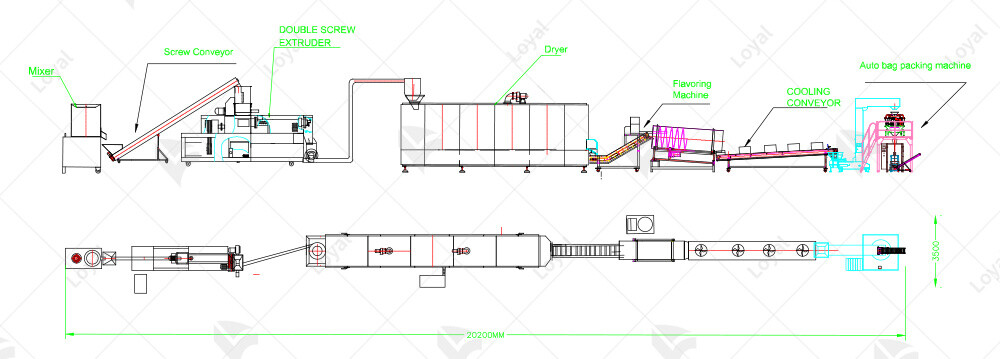
Understanding the Process Flow
Understanding the process flow of a dog feed making machine is crucial for efficient operation and quality control. The process typically involves several steps, each playing a vital role in the production of high-quality dog feed.
Firstly, raw materials such as grains, meat, and additives are selected based on nutritional requirements and availability. These materials are then weighed and mixed in precise proportions to achieve the desired nutritional balance and consistency. This mixing stage is essential for ensuring uniform distribution of nutrients throughout the feed.
Once the ingredients are thoroughly mixed, they are processed through a series of grinding and crushing mechanisms to achieve the desired particle size. This step is critical for enhancing digestibility and absorption of nutrients by the dogs. Different types of grinding and crushing equipment may be used depending on the specific requirements of the feed formulation.
After the grinding process, the feed mixture is transferred to the conditioning chamber where it is subjected to heat and moisture to improve its palatability and texture. Conditioning also helps in gelatinizing starches and reducing anti-nutritional factors present in some raw materials. This stage requires precise control of temperature, moisture levels, and retention time to achieve optimal results.
Once conditioned, the feed mixture is formed into pellets or extruded into shapes using specialized equipment. Pelletizing or extrusion helps in enhancing the shelf-life of the feed, improving digestibility, and reducing feed wastage. The formed pellets or extrudates are then cooled and dried to remove excess moisture before packaging.
Overall, understanding the process flow of a dog feed making machine involves grasping the sequential steps involved in raw material selection, mixing, grinding, conditioning, forming, and packaging. Each step contributes to the overall quality, nutritional value, and palatability of the final dog feed product.
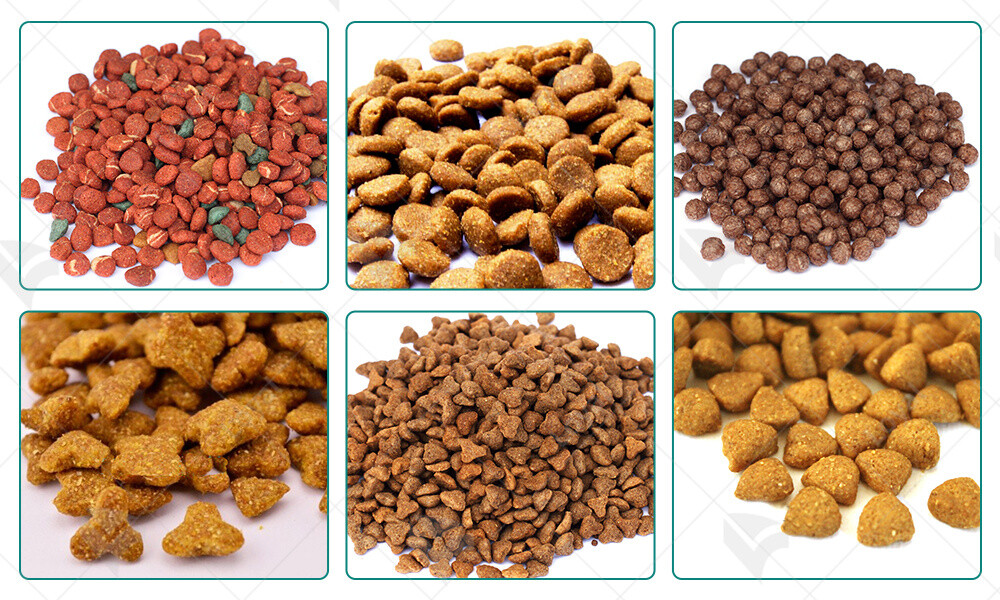
Types of Dog Feed Making Machines
1. Batch Mixers: Batch mixers are versatile machines that allow for the simultaneous mixing of multiple ingredients in predetermined ratios. They are suitable for small to medium-scale production facilities and offer flexibility in feed formulation and customization. Batch mixers are ideal for producing specialty feeds with specific nutritional requirements or flavor profiles.
2. Continuous Mixers: Continuous mixers operate continuously, allowing for a constant flow of ingredients through the mixing chamber. They are designed for high-volume production and offer consistent mixing performance with minimal downtime. Continuous mixers are preferred for large-scale pet food manufacturing operations where efficiency and productivity are paramount.
3. Grinders and Crushers: Grinders and crushers are essential equipment for reducing raw materials to the desired particle size before mixing. They come in various configurations, including hammer mills, roller mills, and attrition mills, each suited for different types of ingredients and feed formulations. Grinders and crushers play a crucial role in enhancing the digestibility and nutrient availability of dog feed.
4. Conditioners: Conditioners are used to heat, moisten, and agitate the feed mixture to improve its texture, palatability, and nutritional quality. They are often integrated into the processing line after grinding and before forming. Conditioners help in gelatinizing starches, deactivating enzymes, and reducing microbial contamination, resulting in a higher quality finished product.
5. Pelletizers and Extruders: Pelletizers and extruders are used to form the conditioned feed mixture into uniform pellets or extrudates. They apply pressure and heat to the feed mixture, causing it to expand and take on a specific shape. Pelletizers are commonly used for producing dry, dense pellets, while extruders are preferred for producing high-moisture, expanded products. Both types of equipment offer advantages in terms of feed texture, shelf-life, and digestibility.

Factors to Consider Before Purchasing
Before purchasing a dog feed making machine, it's essential to evaluate various factors to ensure that the selected equipment meets the specific needs and requirements of the manufacturing facility. When comparing machines from different manufacturers, it's crucial to consider factors such as performance, reliability, cost-effectiveness, and after-sales support.
LOYAL vs. Wenger Comparison:
Criteria | LOYAL Dog Feed Machine | Wenger Dog Feed Machine |
Performance | High | High |
Reliability | Proven track record | Established reputation |
Cost-effectiveness | Competitive pricing | Premium pricing |
After-sales support | Responsive customer service | Comprehensive support |
Performance: Both LOYAL and Wenger dog feed making machines offer high performance and efficiency in terms of mixing, grinding, conditioning, and forming processes. They are equipped with advanced technologies to ensure consistent and reliable operation, resulting in high-quality finished products.
Reliability: LOYAL dog feed machines have a proven track record of reliability and durability in the industry. They are known for their robust construction, low maintenance requirements, and long service life. Similarly, Wenger dog feed machines have an established reputation for reliability and performance, backed by years of experience and expertise in pet food processing.
In summary, when considering factors such as performance, reliability, cost-effectiveness, and after-sales support, pet food manufacturers can make informed decisions when choosing between LOYAL and Wenger dog feed making machines. It's essential to evaluate each criterion carefully and select the machine that best aligns with the specific needs and goals of the manufacturing facility.
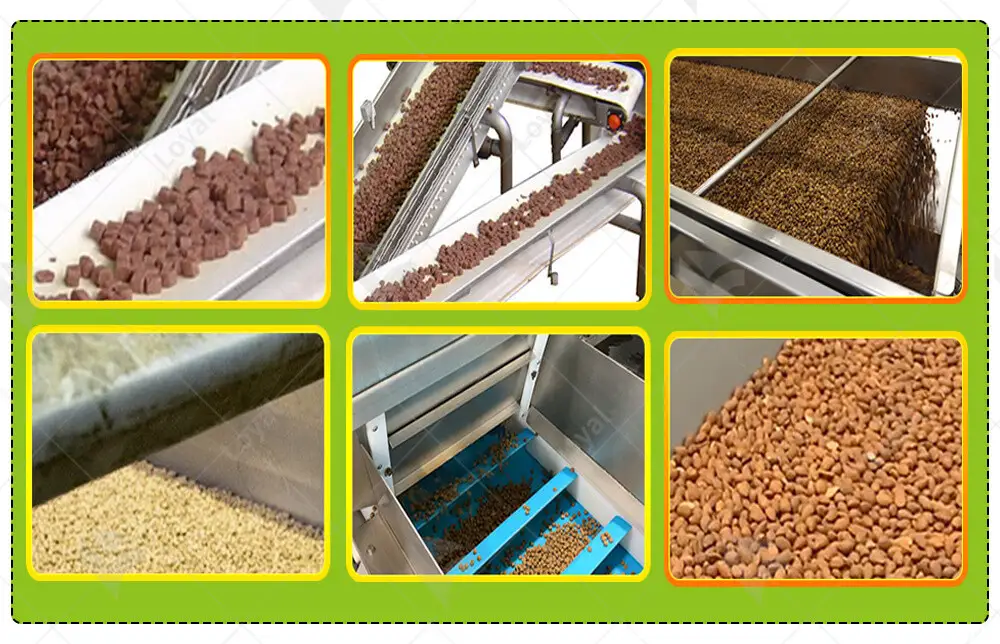
Maintenance and Cleaning Guidelines:
Regular Inspection: Conduct routine inspections of the machine components to check for any signs of wear and tear. This includes examining the conveyor belts, motors, gears, and other moving parts. Any damaged or worn-out parts should be replaced promptly to prevent further damage to the machine.
Cleaning Procedures: Develop a thorough cleaning schedule for the machine, including both internal and external components. Use appropriate cleaning agents and equipment to remove any accumulated debris, dust, or residues. Pay special attention to areas prone to buildup, such as the mixing chamber and discharge chute.
Lubrication: Proper lubrication of moving parts is essential for reducing friction and preventing premature wear. Follow the manufacturer's recommendations regarding the type and frequency of lubrication required for each component. Over-lubrication should be avoided, as it can attract dust and contaminants.
Safety Precautions: Always adhere to safety guidelines when performing maintenance and cleaning tasks. Ensure that the machine is properly shut down and isolated from power sources before beginning any maintenance activities. Use appropriate personal protective equipment, such as gloves and safety goggles, to prevent injuries.
Training: Provide comprehensive training to operators and maintenance personnel on the proper procedures for maintaining and cleaning the machine. Emphasize the importance of regular maintenance in preventing breakdowns and ensuring product quality.

Safety Measures for Operating
Training: Ensure that all operators receive comprehensive training on the safe operation of the machine. They should be familiar with its components, controls, and emergency procedures. Regular refresher training sessions can help reinforce safety practices.
Safety Guards: Install appropriate safety guards and barriers to prevent access to moving parts during operation. This includes guards for belts, gears, and other potential pinch points. Inspect these guards regularly to ensure they are in place and functioning correctly.
Emergency Stop Mechanism: Equip the machine with an emergency stop button or lever that allows operators to quickly halt operations in case of emergencies. Ensure that all personnel know the location of the emergency stop and how to use it effectively.
Lockout/Tagout Procedures: Develop and implement lockout/tagout procedures to prevent accidental startup or energization of the machine during maintenance or repair activities. Provide training on these procedures and ensure compliance at all times.
Personal Protective Equipment (PPE): Require operators to wear appropriate PPE, such as safety goggles, hearing protection, and steel-toed boots, while operating the machine. This helps protect against potential hazards, such as flying debris or noise exposure.

Future Trends in Dog Feed Making Machinery
Automation and Robotics: Advances in automation technology are enabling greater efficiency and precision in dog feed production. Robotic systems can perform tasks such as ingredient handling, mixing, and packaging with minimal human intervention, leading to increased productivity and consistency in product quality.
Customization Capabilities: Pet owners are increasingly seeking personalized nutrition solutions for their dogs based on factors such as age, breed, and health status. Future dog feed making machines may incorporate features that allow for customizable formulations and portion sizes to meet these individualized needs.
Enhanced Food Safety Measures: With growing concerns about food safety and quality, future dog feed making machinery is likely to integrate advanced sanitation and contamination control technologies. This may include features such as UV sterilization, air purification systems, and automated cleaning protocols to ensure the safety of the final product.
Sustainable Manufacturing Practices: As sustainability becomes a key focus in the pet food industry, future dog feed making machines may incorporate eco-friendly materials and processes. This could involve the use of renewable energy sources, reduction of waste and water consumption, and adoption of circular economy principles.
Innovations in Ingredient Processing: Advances in ingredient processing technologies, such as extrusion and micronization, are opening up new possibilities for formulating nutritious and palatable dog feeds. Future machines may integrate these techniques to produce novel textures, flavors, and nutritional profiles.
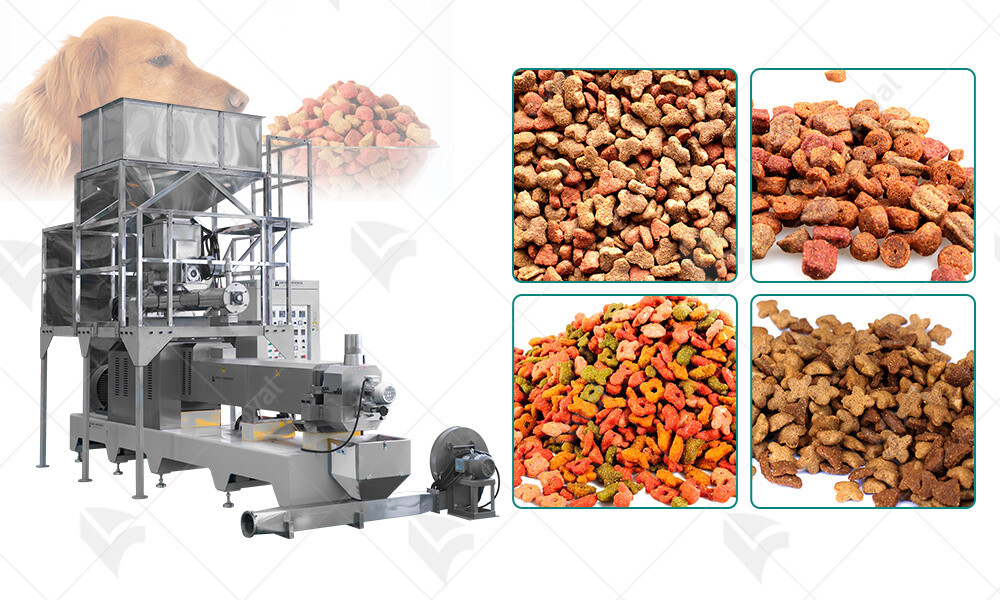
References
1. Petfoodindustry.com
Website: https://www.petfoodindustry.com/
2. Buhlergroup.com
Website: https://www.buhlergroup.com/
3. Clextral.com
Website:https://www.clextral.com/
4. Gea.com
Website: https://www.gea.com/
5. Andritz.com
Website: https://www.andritz.com/












